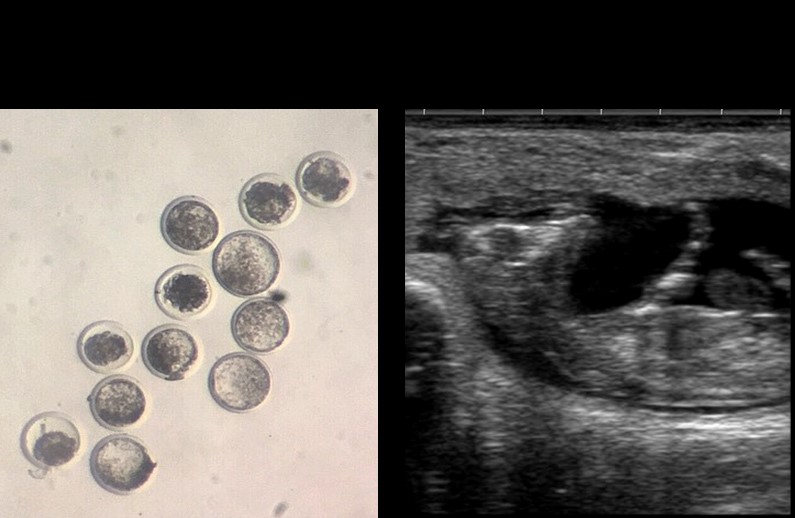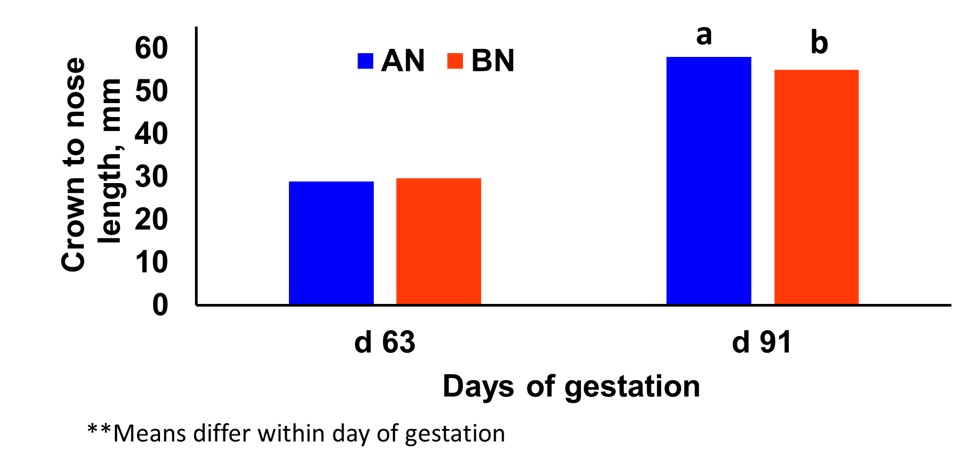By Pedro Fontes and Cliff Lamb
 Researchers at the North Florida Research and Education Center have initiated a five-year experiment that focuses on the relationship between cattle breed and nutritional restriction on subsequent fetal and calf development, feed efficiency, and reproductive traits. Production traits of cattle maintained in warmer climates are improved by inclusion of Bos indicus (Brahman type cattle) genetics. All indications are that global temperatures will continue to increase, and this will intensify the use of Bos indicus genetics in U.S. beef management systems.
Researchers at the North Florida Research and Education Center have initiated a five-year experiment that focuses on the relationship between cattle breed and nutritional restriction on subsequent fetal and calf development, feed efficiency, and reproductive traits. Production traits of cattle maintained in warmer climates are improved by inclusion of Bos indicus (Brahman type cattle) genetics. All indications are that global temperatures will continue to increase, and this will intensify the use of Bos indicus genetics in U.S. beef management systems.
Alterations in several gestational parameters are evident in Bos indicus cattle. Specifically, their fetuses grow slower in utero during early and mid-gestation and they undergo compensatory growth in mid and late gestation. In other mammals, changes in the fetal development plan can generate life-long alterations in metabolic, growth, immunological and reproductive traits. One way to modify this fetal program is by modifying the diet. Understanding how the fetal development plan is modified in cattle will aid in identifying strategies to improve postnatal production traits. The hypothesis is that postnatal growth performance can be manipulated before birth based on genetics of the fetus and/or the maternal system and by dietary restriction during early gestation.
For this study, a restricted feeding scheme was superimposed onto reciprocal embryo transfer study to examine the impact of altered diet during early pregnancy on offspring outcomes. Thirty days prior to synchronized estrus for completing embryo transfer, Angus and Brangus recipient cows were placed into the University of Florida Feed Efficiency Facility (FEF) containing a GrowSafe monitoring system and fed a diet that met daily maintenance requirements (100%) or a diet that restricted intake of nutrients to 70% of protein and energy maintenance requirements. Cows remained on this dietary regimen until day 90 of gestation, then all cows were placed on a diet to meet 100% of the maintenance requirements for the remainder of pregnancy.

Figure 2. Preliminary data demonstrating that Angus fetuses had greater crown to nose lengths on day 91 of gestation.
Thus far, a total of 135 transferable embryos (Figure 1) were produced and transferred to recipients (n = 65 Brangus and 70 Angus). Pregnancy diagnosis was performed with transrectal ultrasonography at day 28 of gestation. Embryo measurements and blood sampling were performed weekly between days 28 and 91 of gestation (Figure 1). The effects of recipient breed on fetal development are shown in Figure 2. For further information on the progress of this experiment feel free to contact Dr. Cliff Lamb (gclamb@ufl.edu).
- Prebreeding Management for Successful Development of Beef Replacement Heifers - December 16, 2016
- Fetal Versus Maternal Contributions of Bos indicus Genetics to Offspring Growth - July 22, 2016
- Understanding Fetal Programming in Cattle - March 11, 2016
